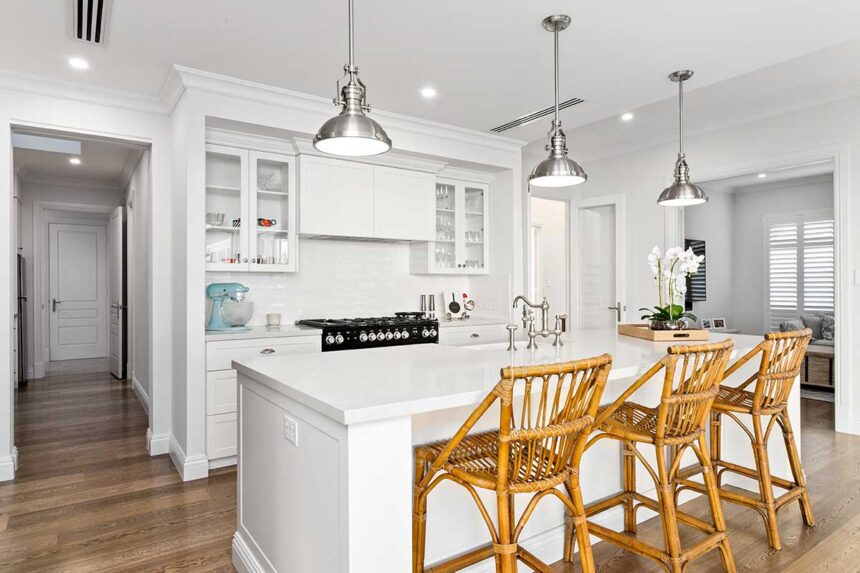There are several reasons why thousands of homeowners choose kitchen renovations to improve both the quality of their homes and their homes’ values. There are some obvious reasons, such as kitchens units showing their age, or them wishing to have a kitchen design that is more functional and aesthetically pleasing.
Another important reason is that the light levels within the kitchen are not conducive to working in that kitchen. It can be bad enough even for basic cooking if the light is insufficient, but if you are someone who loves getting a recipe book out or experimenting with ingredients, not having optimal light can be a huge drawback.
As such, when a homeowner is speaking about their new kitchen’s design with the kitchen renovation company they have chosen for the work, optimising light levels throughout the kitchen will be an important matter to be discussed. This will include where the maximum light levels need to be, how to ensure light is sufficient in all parts of the kitchen, and what the sources of light are going to be.
If you are reading this and wondering how all that can be achieved, then we are going to try and help you. To do so we have outlined for you below five ways in which light in a renovated kitchen can be maximised and optimised so that you never have to cook in poor light again.
Use Natural Light To Your Advantage
Some kitchen designs, unfortunately, fail to take account of or advantage of the natural light which exists just outside the walls of the kitchen being renovated. Apart from the fact it is a free source of light, during daylight hours it can take the illumination of your kitchen to another level. Whether you use existing or new windows, skylights, or replace existing walls with glass, you will benefit from the most readily available source of light there is.
Key Cooking Areas Should Have The Brightest Task Lighting
Perhaps the biggest mistake made in some kitchen designs is that the amount of light available in the key areas where food preparation takes place is far too low. You should not be straining your eyes in a dimly lit area of your kitchen whilst adding ingredients to a recipe or slicing vegetables. The use of task lighting is essential for these as they offer high light levels over worktops and food prep areas. Examples include strip lights, pendants, and LED puck lights.
Use Accent Lighting For Aesthetic Appeal
A kitchen design needs to be more than practical for the likes of food preparation and cooking. You and anyone who uses the kitchen should also be able to enjoy the surroundings, and that includes guests you might have invited. This is where accent lighting is necessary, as it provides what might be described as the finishing touches. Much of this lighting is unseen when off, but when switched on will light toe kicks, above and under cabinets, and inside display cabinets, for example.
Ambient Lighting Should Be Used In The Dining Area And Breakfast Bars
Ambient lighting is the main light within your kitchen and has the practical function of allowing you to see where you are walking as you move around your kitchen. It can be done in many ways including one large light, or several smaller lights which are ceiling mounted, including pendant lights. As well as having ambient lighting positioned in the centre of your kitchen, other places it should be utilised are in dining areas and above breakfast counters.
Ensure You Properly Plan For Lighting Controls And Switches
A final point we must make is to not overlook the importance of planning where all your lighting switches and controls are to be positioned. There is little point in having adjustable task lighting above a worktop if the control switch for adjusting the light is 15 feet away on the other side of the kitchen. So, ensure all switches and controllers are positioned logically and for maximum ease of use.

